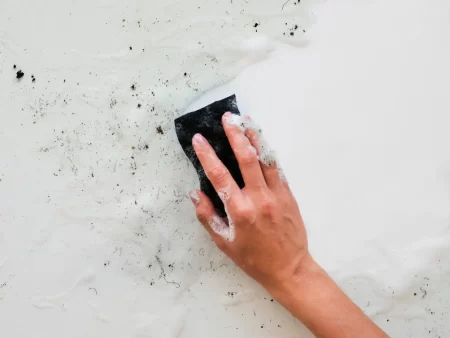 Mold is a common and persistent problem that many homeowners face. Not only can it cause unsightly stains and unpleasant odors in your home, but it can also pose serious health risks.
Mold is a common and persistent problem that many homeowners face. Not only can it cause unsightly stains and unpleasant odors in your home, but it can also pose serious health risks.
If you’re tired of battling mold and want to restore your home to a clean and healthy environment, you’re in the right place. Today, we’ll provide you with expert tips and practical advice on how to get rid of mold once and for all.
Identify the Problem Areas
The first step in combating mold is identifying the problem areas in your home. Mold thrives in damp and humid environments, so pay close attention to areas like bathrooms, kitchens, basements, and laundry rooms.
Look for signs of water damage, such as discolored walls or ceilings, peeling paint, or a musty odor. Additionally, keep an eye on areas with poor ventilation or where condensation frequently occurs, such as windowsills or air conditioning units.
Eliminate Moisture Sources
To effectively get rid of mold, you need to eliminate its source of moisture. Fix any leaks or plumbing issues promptly to prevent water from seeping into walls, floors, or ceilings. Improve ventilation in areas prone to moisture buildup by using exhaust fans, dehumidifiers, or opening windows. Properly insulate pipes, windows, and doors to minimize condensation. By addressing these moisture sources, you’ll create an environment that is less hospitable to mold growth.
Clean and Remove Mold
When it comes to cleaning mold, safety should be a priority. Wear protective gear such as gloves, goggles, and a mask to avoid inhaling mold spores. Non-porous surfaces can be cleaned with a mixture of detergent and water or a solution of vinegar and water.
For porous materials, like carpets or upholstery, it may be necessary to discard and replace them if the mold growth is extensive. Remember to dry the cleaned areas thoroughly to prevent mold from returning.
Prevent Future Mold Growth
Prevention is key to maintaining a mold-free home. Regularly inspect your property for signs of water damage or leaks. Keep humidity levels below 50% by using dehumidifiers or air conditioners.
Ensure proper ventilation by using exhaust fans in kitchens and bathrooms. Regularly clean and dry areas prone to moisture, such as shower curtains, bathroom tiles, and window frames. Consider using mold-resistant paints and materials when renovating or building.
By implementing these preventative measures, you can significantly reduce the chances of mold reappearing.
Don’t let mold take over your home and compromise your health. Take action today, and say goodbye to mold for good!
Picture Credit: Freepik



